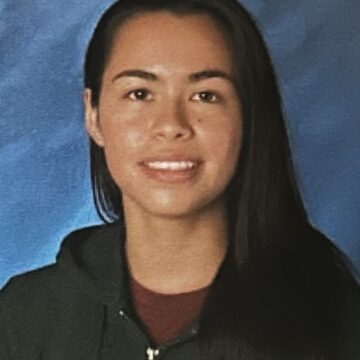
By Caroline j., ’28
Unicorns, rainbows, pink, and glitter.
Those elements were a commonality in my wardrobe, as I packed for a two week sleepaway camp the summer after sixth grade. The possibility of redefining myself in a new environment filled me with excitement as I dreamed of being the unique, yet “popular” girl instead of just the “nerd.” However, upon arrival, that dream was shattered as my fellow campers regarded me with an air of condescension that I didn’t understand. Perplexed, I asked one such camper what was wrong with me, and she said, “The way you dress. And that you ask too many questions.” That summer camp marked the birth of an internal battle between my lifelong desire to stand out and my newfound desire to be accepted in society.
At first, my desire to fit in dominated this conflict. I rejected anything resembling my past wardrobe and surrendered to neutral colors and ripped jeans. However, the confines of conforming soon proved too agonizing, so my naive self devised a plan—I would be my “weird” self and accept that I would never fit in.
Guided by this framework, I began to wear unique clothing again; highlights of my wardrobe include various flowy vintage skirts, countless thrifted grandpa sweaters, and my favorite piece, a purple tank top with a star that I crocheted myself. On top of that, I cut and dyed my lengthy hair, once an anchor of my femininity and normalcy. As the war in my head waged on, standing out began to prevail, nourished by the unexpected empowerment it supplied me.
Despite embracing authenticity, however, the unease brought on by my dilemma still remained. Reflecting on this, I came to realize that self expression was like a colorful Band-Aid for my insecurities. While it boasted originality and spunkiness, ultimately what I lacked was self love. I couldn’t truly embrace being myself if I didn’t love myself and believed I deserved the love of others. Fighting my insecurities began with realizing that standing out and fitting in are not mutually exclusive. We all need and deserve a community to fit in with—not to conform with—but to find a place in, just like each unique piece of clothing has its perfect place in my closet.
For me, these communities came from the people and passions I engaged with. I introduced middle schoolers to the mindblowing world of coding through my passion project, Code to Create. After experiencing the exhilaration of digging into real world issues in debate club and Youth in Government, I championed my voice in our student newspaper, the Noctiluca. I put my face in front of the entire school by co-founding a video broadcast series, Spark Shorts, where I hosted segments including Teach-It Tuesday (a segment where anyone can teach anything), Spit It Out (a game show encouraging authenticity), and Oblivious Oliver (a story based segment). At state honors orchestra, I ran a meme page amassing likes and laughs while we triumphed through music together. On the science side of things, a joke on a late night call with my friends materialized into reality when we founded Quantum Astronomical Science Club, a science club with a fancy name.
Although these ventures may seem spontaneous and scattered, they collectively taught me the pure joy that collaborative learning and creativity sparks. Awed expressions as my peers and I learned about Quantum Physics together, celebratory chatter after a successful printing of a newspaper issue, triumphant fist pumps when a student’s code ran correctly—those electrifying moments are what I want to live and impart upon others for the rest of my life. In the end, my internal battle between standing out and fitting in was resolved not through one side’s victory, but through compromise. In my quest to stand out, I had unknowingly found just what I needed—a way to stand out and fit in.
Admissions Committee Comments
Caroline’s essay focuses on their experiences developing and accepting their identity. We see how Caroline navigates the challenge of being themself while also trying to fit in with their peers. After reflecting on authenticity and self-love, Caroline better understands who they are and what matters to them. This leads them to dive into their passions and find various communities with shared values and interests—from coding and broadcasting to quantum physics. These experiences, born out of a deeper understanding of their identity, ensured Caroline could have the most meaningful impact on themself and their high school. As we build a class of students at Hopkins, this essay helps us to visualize how Caroline might engage with those around them to make an impact in our community.





